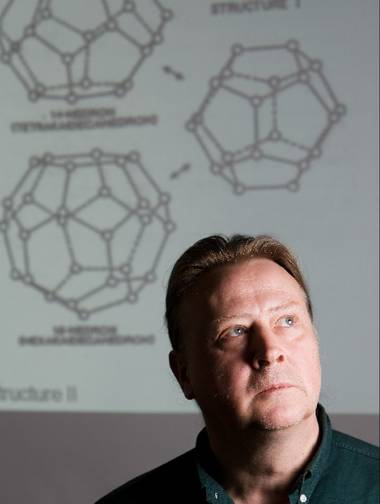2572
Scientific Program

Bjorn Kvamme
University of Bergen, Norway
Biography:
Bjorn Kvamme has obtained his MSc in Chemical Engineering (1981) and PhD in Chemical Engineering (1984) from the Norwegian University of Technology and Natural Sciences. After a short period with SINTEF and two years at Bergen University College, he was appointed as Full Professor in 1987. He was appointed as a Professor in Gas Processing at the Department of Physics, University of Bergen in 2000. He is the author/co-author of 422 publications during last 25 years, of which 148 are in good international scientific journals.
Abstract
Huge amounts of methane are trapped in ice-like structures (hydrate) around the world. Estimated amounts vary but the most recent estimates indicate that the energy trapped in these hydrates may be as much as twice the energy of conventional fossil fuels. 99% of these hydrates are almost pure methane hydrate since the dominant sources are biogenic methane form the upper crust. CO2 forms the same structure of hydrate water as methane but the thermodynamic stability of carbon dioxide hydrate is higher. This implies that injection of CO2 into natural methane hydrates in sediments will lead to a conversion of the in situ methane hydrate over to a mixed hydrate dominated by CO2. This is a win-win situation in which the methane is released as energy source while leaving CO2 stored as a solid phase in underground sediments. There are two primary mechanisms that can lead to this conversion. The first of these is a solid state mechanism in which the CO2 gradually replace the filling of methane in primarily the 75% largest water cavities in the structure. This is a very slow process and practically not important. Another mechanism involves the formation of a new hydrate from available free in the sediment pores. This formation process releases heat which will distribute and assist in dissociation of in situ methane hydrate. In order to verify the latest mechanism we utilize Phase Field Theory (PFT) modeling. In simplified terms this corresponds to a minimization of free energy under the constraints of mass- and heat-transport. In this modeling we have placed liquid water of various thickness around and initial hydrate and then sampled the dynamics of the reformation process. It is observed that the more available liquid water around the initial methane hydrate core, the longer and fast conversion is retained. When this initial liquid water layer is consumed the slow mechanism takes over.
- Petroleum Geology
- Geophysical Exploration
- Hydraulic Fracturing
- Advanced Drilling Technologies
- Petroleum Refineries
- Computer Applications in Petroleum Engineering
- Computational Modelling
- Petroleum Desulphurization
- Reservoir Engineering & Reservoir Simulation
- Advanced Natural Gas Engineering
- Petrophysics & Petrochemistry
- New frontiers in Petroleum Engineering
- Major Challenges in Petroleum Industry
- Environmental Impacts in Petroleum Engineering
- Petroleum Substitutes
- Petroleum Economics

